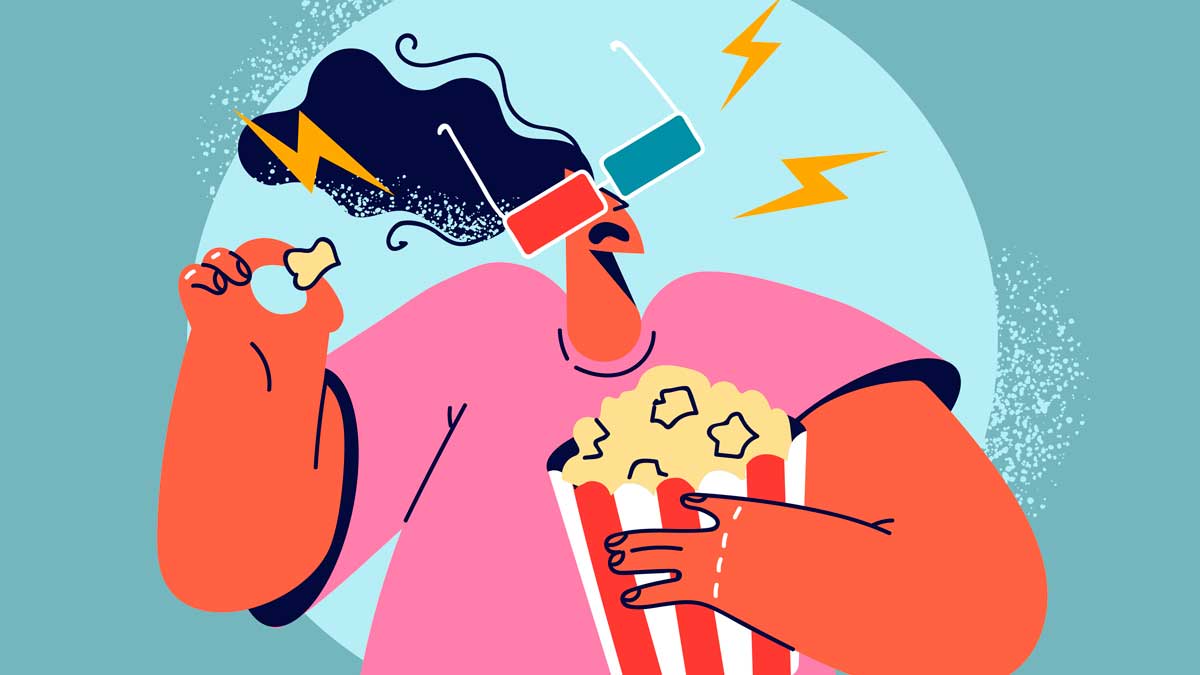 Image: Valery Vasilyeu (Motion Array)
Image: Valery Vasilyeu (Motion Array)
Author: VANAS
Best Ways to Watch and Analyze Movies
Table of Contents
- Experience the Movie in a Crowded Theater
- Analyze Audience Reactions
- Watch with a Diverse Audience
- Focus on Music and Sound Effects
- Study Cinematography and Editing
- Frequently Asked Questions
Experience the Movie in a Crowded Theater
Watching a movie for the first time in a crowded theater can be an exhilarating experience. The shared atmosphere with a full audience can heighten your emotional response to the film. When the theater is packed, you’re more likely to be immersed in the movie's world due to the collective reactions around you. This environment can make the movie more memorable and can offer insights into how different aspects of the film affect people in real-time.
For instance, VANAS Online Animation School offers programs in Animation, Visual Effects, and Video Games that can help you understand how cinematic experiences are crafted. By studying how audience reactions vary, you can learn more about the impact of visual storytelling and emotional engagement. Visit VANAS to explore digital arts programs and see how they can support your career in animation.
Analyze Audience Reactions
Watching a movie a second time allows you to focus on the audience’s reactions. Pay attention to moments when people laugh, remain silent, become restless, or even get up and leave. These reactions can provide valuable insights into how different parts of the movie resonate with viewers. For example, a well-timed joke or a dramatic twist might elicit strong reactions that help you understand what elements are most engaging or effective.
Understanding audience reactions can help you appreciate the nuances of storytelling and emotional manipulation in film.
Watch with a Diverse Audience
To get a more comprehensive understanding of a film's impact, watch it with a diverse audience. Different age groups, cultural backgrounds, and personal experiences can influence how people react to a movie. For instance, a film that resonates well with teenagers might not have the same effect on older adults, and vice versa. By observing a varied audience, you can see how different demographics interpret and respond to the same film.
A mixed audience provides a broader perspective on the film’s universal themes and specific elements that might appeal to different groups.
Focus on Music and Sound Effects
Music and sound effects play a crucial role in shaping the mood and tone of a film. Pay close attention to how music is used throughout the movie. Note when it is loud and dramatic or soft and subtle. Sound effects, such as the creak of a door or the roar of an explosion, add realism and enhance the viewer’s experience. Observe how these elements are used to emphasize certain scenes or emotions.
By focusing on the auditory aspects of a film, you can better understand how sound influences the overall cinematic experience.
Study Cinematography and Editing
Cinematography, composition, editing, camera placement, and camera movements are fundamental to film production. Analyze how scenes are framed and how the camera moves to tell the story. Pay attention to transitions between scenes, the length of shots, and how editing impacts the film’s pacing. For instance, quick cuts might create a sense of urgency, while long takes can build tension or intimacy.
Studying these technical aspects helps you appreciate the artistry behind film-making and animation.
Frequently Asked Questions
- How does watching a movie in a crowded theater affect the experience?
A crowded theater can enhance the emotional impact of a film through shared audience reactions and a heightened atmosphere. - Why is it important to analyze audience reactions during a movie?
Audience reactions provide insights into how different parts of the movie engage viewers and highlight elements that are effective or need improvement. - How does watching with a diverse audience benefit your understanding of a film?
A diverse audience offers a broader perspective on how different demographics interpret and respond to the film, revealing its universal and specific appeal. - What should I focus on when analyzing a film's use of music and sound effects?
Pay attention to how music and sound effects are used to enhance mood, emphasize scenes, and contribute to the overall cinematic experience. - Why is it important to study cinematography and editing in films?
Understanding cinematography and editing techniques helps appreciate how visual storytelling is crafted and how technical aspects influence the viewer’s perception and engagement.
By incorporating these methods into your film studies, you can gain a deeper appreciation for the craft of movie-making and animation. VANAS Online Animation School provides comprehensive programs in Animation, Visual Effects, and Video Games to help you develop a nuanced understanding of these elements. To start your journey in the animation industry, visit VANAS.







